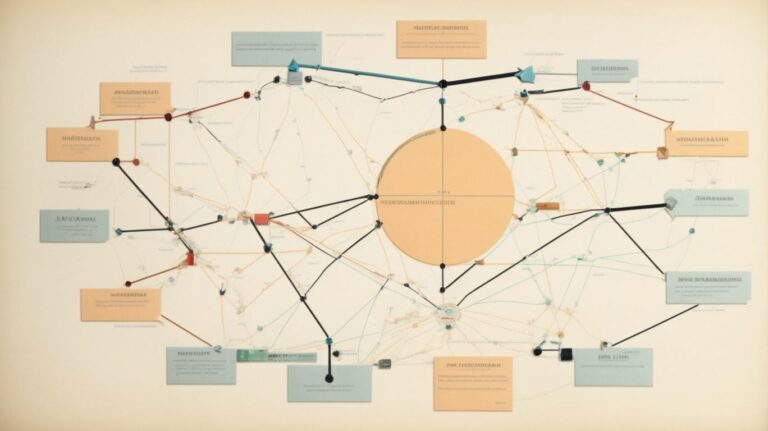Have you ever wondered about the concept of extinction in psychology? How does it occur and what are the different types of extinction? From classical conditioning to operant conditioning, there are various factors that influence extinction, such as timing and frequency of reinforcement and contextual cues.
But what are the effects of extinction on learned behaviors? And how is extinction utilized in therapy, such as exposure therapy and aversion therapy? Let’s explore the ethical considerations of using extinction in psychology.
Contents
- 1 What Is Extinction in Psychology?
- 2 How Does Extinction Occur?
- 3 What Are the Different Types of Extinction?
- 4 What Are The Factors That Influence Extinction?
- 5 What Are the Effects of Extinction?
- 6 How Is Extinction Used in Therapy?
- 7 What Are the Ethical Considerations of Using Extinction?
- 8 Frequently Asked Questions
- 8.1 What is extinction in the context of psychology?
- 8.2 How does extinction occur in psychology?
- 8.3 What can cause extinction to occur in psychology?
- 8.4 Is extinction always a negative occurrence in psychology?
- 8.5 Can extinction be reversed in psychology?
- 8.6 How does an understanding of extinction in psychology impact behavior modification?
What Is Extinction in Psychology?
Extinction in psychology refers to the process where a previously learned behavior or conditioned response decreases or disappears over time due to the absence of reinforcement.
When an individual is no longer reinforced for a specific behavior that was previously associated with a stimulus, the frequency of that behavior starts to decline. This phenomenon plays a crucial role in behavior modification and learning paradigms. By understanding how extinction works, psychologists can effectively address unwanted behaviors by removing the reinforcing stimuli. It also highlights the importance of consistent reinforcement in maintaining desired behaviors.
Extinction can not only lead to changes in individual behavior but also reshape how individuals perceive and respond to certain stimuli in their environment, ultimately altering their behavioral patterns over time.
How Does Extinction Occur?
Extinction occurs in psychology when the conditioned stimulus is presented without the unconditioned stimulus, leading to the gradual reduction or elimination of the conditioned response.
During the extinction process, individuals learn that the conditioned stimulus no longer predicts the unconditioned stimulus, resulting in a weakening of the learned association. With repeated exposure to the conditioned stimulus alone, the behavioral responses diminish as the signal loses its predictive value.
This phenomenon is rooted in the principles of classical conditioning, where behaviors are shaped by the environment through associations between stimuli and responses. Extinction plays a crucial role in modifying maladaptive behaviors and promoting new learning experiences.
What Are the Different Types of Extinction?
Extinction manifests in different forms depending on the type of conditioning involved, such as classical conditioning where the association between the conditioned stimulus and unconditioned stimulus weakens, and operant conditioning where learned behaviors diminish in the absence of reinforcement.
In classical conditioning, extinction occurs when the conditioned response gradually decreases in strength or disappears altogether due to the repeated presentation of the conditioned stimulus without the unconditioned stimulus. This process involves unlearning the previously established association between the two stimuli, leading to a fading of the conditioned response over time.
On the other hand, operant conditioning extinction involves the reduction or elimination of a behavior that was previously reinforced. When the reinforcer is no longer provided following the behavior, the individual is less likely to exhibit that behavior in the future.
Classical Conditioning Extinction
Classical conditioning extinction is characterized by the fading of the conditioned response when the conditioned stimulus is repeatedly presented without the unconditioned stimulus, disrupting the learned association between the two stimuli.
During the process of classical conditioning extinction, the organism learns that the conditioned stimulus no longer predicts the arrival of the unconditioned stimulus, leading to the weakening or disappearance of the conditioned response. The absence of the unconditioned stimulus signals to the brain that the previously learned association is no longer reliable, causing a decline in the conditioned response over time.
Neurobiologically, this phenomenon involves changes in synaptic connections and neurotransmitter release within the brain, particularly in regions such as the amygdala and prefrontal cortex. These areas play crucial roles in emotion regulation and memory processes, influencing the extinction of conditioned responses.
Operant Conditioning Extinction
Operant conditioning extinction occurs when a previously reinforced behavior decreases in frequency or ceases altogether due to the absence of reinforcement, highlighting the role of reinforcement schedules in shaping voluntary behaviors.
Understanding the dynamics of reinforcement schedules is crucial in comprehending how behaviors are maintained or extinguished over time. Different reinforcement schedules, such as fixed ratio, variable ratio, fixed interval, and variable interval, play a pivotal role in determining the rate and pattern of learning. Behavioral research extensively examines how organisms respond to these schedules and how they impact the resistance to extinction. Researchers delve deep into the principles of learning and how they influence the acquisition and retention of behaviors, providing valuable insights into behavior modification and adaptive strategies.
What Are The Factors That Influence Extinction?
Several factors influence the process of extinction in psychology, including the timing and frequency of reinforcement, contextual cues, and the occurrence of spontaneous recovery.
When examining extinction phenomena, it becomes evident that the schedules of reinforcement play a pivotal role in shaping behavior. Reinforcement schedules such as fixed-ratio, variable-ratio, fixed-interval, and variable-interval schedules can impact how quickly a behavior extinguishes. The presence of contextual cues can either facilitate or inhibit the extinction process, as environmental stimuli can trigger the reappearance of a previously extinguished behavior. Understanding these contextual cues is crucial in designing effective extinction procedures. The occurrence of spontaneous recovery, where an extinguished behavior suddenly resurfaces, highlights the complexity of behavioral responses and the need for comprehensive extinction strategies.
Timing and Frequency of Reinforcement
The timing and frequency of reinforcement play a crucial role in determining the rate and effectiveness of extinction, with different reinforcement schedules impacting the extinction process in distinct ways.
Reinforcement schedules, such as continuous reinforcement, fixed-ratio schedules, or variable-interval schedules, influence how quickly a behavior extinguishes when the expected reinforcement no longer occurs. When reinforcement is constant, extinction tends to happen rapidly once reinforcement stops. In contrast, variable schedules can result in more persistent behaviors because the subject is uncertain when the reinforcement will be delivered.
- Extinction learning, driven by the principles of operant conditioning, is governed by a gradual reduction in the behavioral response when the expected reinforcement is no longer provided, leading to the eventual extinction of the behavior.
Contextual Cues
Contextual cues can significantly influence extinction learning by providing environmental signals that modulate behavioral responses, affecting the generalization and discrimination processes within the extinction paradigm.
When an individual encounters a previously feared object in a safe setting, the context acts as a cue signaling safety, leading to a reduction in fear response. This highlights the crucial role of environmental factors in shaping both learned fear responses and the subsequent extinction of those responses. By recognizing the significance of these contextual cues, researchers can design more effective extinction-based therapies for conditions like anxiety disorders and PTSD, where learned associations significantly impact daily functioning.
Spontaneous Recovery
Spontaneous recovery refers to the reappearance of an extinguished response following a period of rest or delay, suggesting the presence of underlying neurobiological mechanisms that influence the retention and reemergence of learned behaviors.
This fascinating phenomenon plays a crucial role in the field of behavioral psychology and is often utilized in various studies to understand the dynamics of extinction processes. The neural basis of behavioral reemergence involves the activation of previously inactive neural pathways or the strengthening of existing connections, leading to the revival of the once-extinguished response. Spontaneous recovery demonstrates the resilience of memory traces, showcasing how memories can persist despite apparent extinction.
Understanding the principles governing recovery phenomena sheds light on the complex interplay between learning, forgetting, and remembering, offering insights into how we adapt and respond to changing environments.
What Are the Effects of Extinction?
Extinction leads to the reduction of learned behaviors, the occurrence of renewal effects, and the development of resistance to extinction, illustrating the complex interplay between conditioned responses and environmental cues.
When behaviors undergo extinction, the previously reinforced responses gradually weaken and diminish in strength due to the lack of reinforcement. This process alters the individual’s behavioral repertoire, leading to a shift in their reactions to specific stimuli.
Renewal effect, a phenomenon in psychology, highlights the tendency of extinguished behaviors to re-emerge when the individual encounters the initial environmental context where the behavior was originally learned. This resurgence of behavior emphasizes the importance of contextual cues in influencing behavioral responses.
Resistance to extinction occurs when individuals exhibit persistence in performing the extinguished behavior despite the absence of reinforcement. Factors such as the schedule of reinforcement, motivation levels, and past learning experiences can contribute to the resistance phase, making it challenging to fully eradicate previously learned behaviors.
Reduction of Learned Behaviors
The process of extinction results in the reduction of learned behaviors as the associations between stimuli and responses weaken over time, demonstrating the plasticity and adaptability of behavioral responses.
Extinction is a fundamental concept in behavioral psychology, shedding light on how behaviors that were once learned can gradually diminish through lack of reinforcement. When an individual no longer experiences the expected outcome of a particular behavior in response to a specific stimulus, the association weakens. This weakening process is governed by various mechanisms, including disuse and the absence of reinforcement. As a result, conditioned responses start to fade, illustrating the intricate relationship between stimuli and behavioral responses.
Renewal Effect
The renewal effect in extinction research refers to the reoccurrence of an extinguished behavior when an individual returns to the original context where the behavior was learned, showcasing the contextual dependence of extinction outcomes.
It highlights a fascinating aspect of learned behaviors, where the contextual cues play a crucial role in influencing behavioral responses. This phenomenon underscores the context-specific nature of learned behaviors, suggesting that the environment in which a behavior is acquired significantly impacts its extinction and subsequent reemergence. Understanding how these contextual factors interplay in the process of extinction can provide valuable insights into behavior modification techniques and the variability observed in extinction-induced responses.
Resistance to Extinction
Resistance to extinction reflects the persistence of a learned behavior despite the absence of reinforcement, highlighting the durability and stability of certain behavioral responses that resist the extinction process.
Behavioral persistence can be influenced by various factors, including the nature of the reinforcement schedule during the initial learning phase. Inhibitory learning plays a crucial role in understanding why some behaviors are more resistant to extinction than others. When individuals are exposed to extinction trials, those with a history of inconsistent reinforcement or occasional rewards may show greater response resistance compared to those whose behavior was continuously reinforced. This phenomenon is deeply rooted in the principles of operant conditioning and can shed light on the intricacies of learning and behavior modification.
How Is Extinction Used in Therapy?
Extinction is utilized in therapy settings to address maladaptive behaviors through the systematic reduction or elimination of conditioned responses, with clinical treatments emphasizing inhibitory learning and behavioral change strategies.
Therapeutic interventions leverage the concept of extinction to help individuals overcome harmful behaviors by breaking the association between triggers and unwanted responses. In these interventions, inhibitory associations are formed to weaken the conditioned response, leading to a decrease in the frequency of the maladaptive behavior. By applying the principles of inhibitory learning, therapists aim to extinguish problematic behaviors while reinforcing healthier alternatives. This process involves systematic exposure to the stimuli triggering the undesirable behavior, followed by the withholding of reinforcement to disrupt the established response pattern.
Exposure Therapy
Exposure therapy leverages extinction principles to alleviate conditioned fear responses by gradually exposing individuals to fear-inducing stimuli in a controlled setting, fostering the extinction of maladaptive associations.
This therapeutic approach aims to modify maladaptive behaviors by systematically exposing individuals to feared stimuli, teaching them that the feared outcome does not occur or is not as threatening as initially perceived.
Integrating fear conditioning paradigms, exposure therapy helps individuals to confront their anxieties in a safe environment, facilitating the rewiring of their brain’s responses to triggers that once caused distress.
Systematic Desensitization
Systematic desensitization employs extinction strategies to reduce phobic responses through gradual exposure to anxiety-provoking stimuli while promoting relaxation techniques to counter the extinction-induced variability and discomfort.
Extinction bursts, a common occurrence during desensitization, are effectively managed by continuing the exposure while preventing avoidance of the phobic stimulus. This allows the individual to learn that the feared situation is not associated with the expected negative outcomes, leading to a reduction in anxiety levels over time.
Conditioned responses are modified by replacing fear-linked reactions with relaxation cues to create a new, positive association with the previously anxiety-provoking stimuli. By doing so, the individual learns to respond differently, fostering a sense of control and reducing emotional reactivity.
Aversion Therapy
Aversion therapy applies extinction principles by pairing undesirable behaviors with noxious stimuli to reduce the frequency of maladaptive responses, drawing on research findings to inform the development of effective therapeutic interventions.
Aversion therapy operates on the foundational principle that by associating negative outcomes with specific behaviors, individuals can learn to avoid or eliminate those behaviors.
This therapeutic approach is rooted in the theories of classical and operant conditioning, where conditioned responses to stimuli are established through repeated pairings.
Research has shown the effectiveness of aversion therapy in addressing various issues such as addictions, phobias, and behavioral disorders, providing a structured method for behavior modification.
By carefully selecting and applying aversive stimuli, therapists can help individuals make significant strides in altering their maladaptive patterns and achieving lasting changes in their behavior.
What Are the Ethical Considerations of Using Extinction?
The application of extinction raises ethical considerations regarding the manipulation of involuntary responses, the implications for behavioral research, and the potential impact on individuals undergoing extinction-based interventions.
When diving into the ethical boundaries, it becomes crucial to question the extent to which responses can be altered without infringing on personal autonomy. Informed consent emerges as a cornerstone in behavioral research, ensuring that individuals are fully aware of the procedures and their implications before participating. This concept underscores the importance of respecting an individual’s right to make autonomous decisions about their involvement in studies involving extinction procedures. Balancing the necessity of advancing scientific understanding with the ethical responsibility towards participants creates a complex ethical dilemma that researchers must navigate.
Frequently Asked Questions
What is extinction in the context of psychology?
Extinction in psychology refers to the gradual disappearance of a previously learned behavior or response when it is no longer reinforced or rewarded.
How does extinction occur in psychology?
Extinction occurs when a previously learned behavior or response is repeatedly performed without any reinforcement, leading to its eventual disappearance.
What can cause extinction to occur in psychology?
Extinction can occur due to a variety of factors such as the removal of rewards or reinforcements, changes in the environment, or the introduction of new competing behaviors.
Is extinction always a negative occurrence in psychology?
No, extinction can also be a positive occurrence in psychology as it allows for the replacement of unwanted behaviors with more desirable ones.
Can extinction be reversed in psychology?
Yes, extinction can be reversed through processes such as spontaneous recovery, reinstatement, or renewal, which can cause the previously extinct behavior to reappear.
How does an understanding of extinction in psychology impact behavior modification?
Understanding extinction in psychology can help in the development of effective behavior modification techniques, as it allows for the identification and elimination of unwanted behaviors through the removal of reinforcements.




